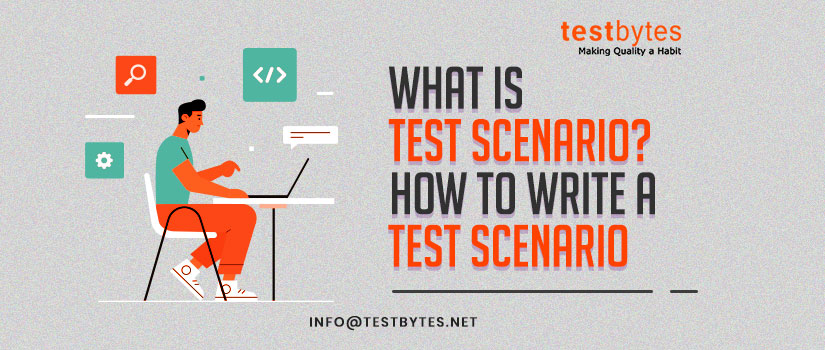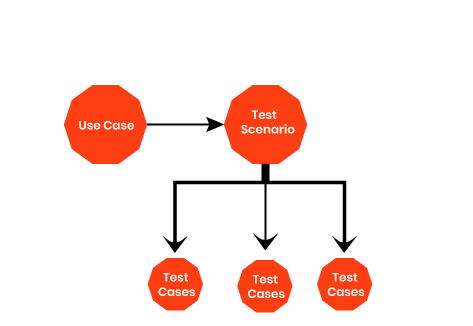
What is Test Scenario? How to Write a Test Scenario?
August 17th, 2017

What is Test Scenario?
A test scenario also called as Test Condition or Test Possibility is a document that specifies all the functionalities that need to be tested for a software application to deliver what it is meant to. Exactly defining what should be tested as part of a particular feature or application, a test scenario calls for the tester to identify himself as the end-user.

It is only then he/she will be able to relate to the requirements of the user. This process of the tester putting himself in the shoes of the customer will help him unveil many real-life scenarios that need to be addressed for the application to perform its ordained task.
Scenario Testing
Getting its name from testing different functionalities, Scenario Testing is an arm of software testing. Tagged as a simple way of testing complicated systems, scenario testing is all about enlisting different scenarios to be tested for the entire application to perform without any bugs. Below is a simple example that will help you understand what a test scenario is all about.
The Purpose behind Test Scenarios
After understanding the definition of a test scenario, it is now important to know the benefits of test scenarios. Here is a rundown of the purpose behind the documentation of a test scenario.
- A test scenario is a comprehensive testing procedure.
- Test scenarios are quick tools that will help identify crucial end-to-end transactions supported by the real utility of various software applications.
- It is a document that can be vetted by stakeholders including developers, business analysts and end-users.
- Helping to measure testing efforts, test scenarios assist your clients in the formulation of a proposal to reorganize their manpower requirements.
- The prime objective of a test scenario is to ensure that the entire functionality coming under a test is checked completely for its performance.
Step-Wise Detailing to Formulate a Test Scenario
You as a tester can follow the below mentioned 5 steps to create different test scenarios:
1st Step: Primarily, you should be read and understand requirement documents. These include: SRS (Software Requirement Specifications), FRS (Functional Requirements Statement) and BRS (Business Requirement Specification) concerning the System Under Test (SUT).
2nd Step: Delving deep into each and every requirement, it is important that you identify various possible user actions that will come up while specifying all the user objectives. Attaching technical specifications to every requirement, this step is complete once you discover various scenarios when the system can be abused through the intervention of a hacker.

This is the most important part of the second step when you put yourself in the shoes of a hacker and try to come up with loopholes concerning the breach of application security and functioning.
3rd Step: Gathering of information and inferences gained after the completion of the above 2 steps will be your next step. This is followed by the enlisting of various test scenarios that call for verifying each and every function of your software that is to be tested.
4th Step: After enlisting all the probable test scenarios, you should chalk out a Traceability Matrix. This is a document that is created to confirm that every requirement has a matching test scenario that should be tested.
5th Step: The last step is all about reviewing the test scenarios. Involving your supervisor, all the test scenarios drafted by you will be studied. Upon the successful scrutiny by your superiors, your test scenarios will reach the tables of your stakeholders who will then sit for reviewing of the scrutinized document.
Tips to Create Effective Test Scenarios
Below is the list of simple tips that will help you chalk out comprehensive test scenarios:
- As a tester, it is not only your ordained duty to ensure that every requirement should be tied to a test scenario but also to adhere to the specifications of the Project Methodology
- It is only when you compartmentalize complex requirements that you can check whether every requirement comes attached with a test scenario. This tip thus helps you cover all the requirements in total.
- It is best to stay away from creating complicated test scenarios concerning multiple functional requirements.
- It also comes as an intelligent move to stick to your client’s priority list. Bearing in mind the cost involved in testing multiple scenarios, it is important that you conduct selected test scenarios that are vital to your client.
Read also : Difference Between Test Case vs Test Scenario [Infographic]
Conclusion
Tagged as a significant component of testing, a Test Scenario effectively saves a lot of money and time involved in testing procedures. Adhering to the quality specifications of the software at every step, this document goes a long way in delivering bug-free functionalities. Not to confuse a test scenario with a test case, it is an important fact to understand that a test case primarily relies on a Test Scenario and not the other way round.


 Software Testing Events
Software Testing Events App Testing
App Testing Web App Testing
Web App Testing Game Testing
Game Testing Automation Testing
Automation Testing Load Testing
Load Testing Security Testing
Security Testing Performance Testing
Performance Testing Hire a Tester
Hire a Tester





